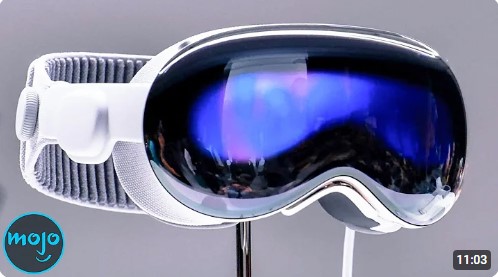While big-name brands often dominate the tech headlines, there are numerous lesser-known companies making significant strides in the industry. These hidden gems provide innovative solutions that can rival, or even surpass, those from more established players.
Innovative Startups Leading the Charge
Startups are the lifeblood of innovation, often bringing fresh perspectives and novel solutions to the market. Companies like Lumen, which offers a portable device that tracks your metabolism, and Nreal, known for its lightweight augmented reality glasses, are perfect examples of how smaller players are making big waves.

Moreover, startups like Whoop, which provides advanced fitness tracking bands, and Oura, known for its smart rings that monitor sleep and health metrics, are pushing boundaries in personal health tech. These companies often identify gaps in the market that big brands overlook, offering specialized products that cater to specific needs.
Another rising star is Nothing, a tech company focused on creating minimalist, design-forward consumer electronics. Their transparent earbuds and sleek smartphones stand out in a market saturated with similar-looking devices. These startups are not just competing; they are setting new standards in innovation and design.
Niche Products with Major Impact
Sometimes, the most impactful tech innovations are those that serve a specific niche. For instance, the Moft Z is a versatile sit-stand desk that folds flat, making it ideal for remote workers with limited space. Another example is the Embr Wave, a personal thermostat that helps you feel cooler or warmer at the press of a button.
In the realm of audio technology, the Bone Conduction Headphones by AfterShokz offer a unique way to listen to music while staying aware of your surroundings. These headphones are perfect for runners and cyclists who need to remain alert. Similarly, the BeHear NOW assistive hearing device caters to individuals with hearing difficulties, providing a customizable and affordable alternative to traditional hearing aids.
For pet owners, the Furbo Dog Camera offers a way to monitor and interact with pets remotely. This device not only allows you to see and talk to your pets but also to toss treats, making it a hit among pet lovers. These niche products solve specific problems, enhancing the quality of life for their users.
Emerging Markets and Their Innovations
Emerging markets are also hotbeds of innovation, often driven by unique local needs. In India, for example, companies like Ola and Zomato are revolutionizing transportation and food delivery services. Ola’s electric scooters and Zomato’s drone-based food delivery systems are just a glimpse of the innovations coming from these regions.
In Africa, fintech startups like Flutterwave are transforming the financial landscape by providing seamless payment solutions that cater to both local and international markets. Similarly, M-Pesa in Kenya has become a cornerstone of mobile banking, offering financial inclusion to millions.
Latin America is not far behind, with companies like Rappi offering a super-app that provides various services from delivery to financial products, all in one platform. These innovations are not only solving local problems but also setting the stage for global expansion.
Define Your Needs: Understanding Your Tech Lifestyle
Before diving into the latest tech innovations, it’s essential to understand your unique tech needs. This involves assessing your lifestyle and determining how technology can best enhance it.
Assessing Your Daily Routine
Take a moment to reflect on your daily activities. Do you spend a lot of time working from home? Are you a fitness enthusiast? Do you love smart home gadgets? By identifying your primary activities, you can better pinpoint the tech solutions that will be most beneficial for you.
For instance, remote workers might benefit from ergonomic office setups and productivity tools like noise-cancelling headphones or standing desks. Fitness enthusiasts might look for advanced wearables that offer comprehensive health tracking, such as the Garmin Fenix series or the Apple Watch.
Parents might prioritize tech that ensures the safety and development of their children, such as baby monitors with AI capabilities or educational tablets. By aligning your tech purchases with your daily routine, you can ensure that you are investing in products that genuinely add value to your life.
Prioritizing Functionality Over Trendiness
It’s easy to get swept up in the excitement of the latest tech trends, but it’s crucial to prioritize functionality. Ask yourself if a new gadget will genuinely improve your life or if it’s just a fleeting fascination. For instance, a high-quality noise-cancelling headphone like the Sony WH-1000XM4 can significantly enhance your work-from-home experience by blocking out distractions.
Consider the long-term usability of the product. Will it still be useful in a year or two, or will it quickly become obsolete? Practicality should be a key factor in your decision-making process. Smart home devices like thermostats, lights, and security systems should offer real benefits, such as energy savings, increased security, or improved convenience.
It’s also important to read reviews and gather user feedback before making a purchase. Websites like Wirecutter and TechRadar offer in-depth reviews that can help you make informed decisions. Ultimately, the goal is to invest in technology that serves a practical purpose and stands the test of time.
Budgeting for Tech Purchases
Budgeting is a crucial aspect of investing in technology. While it’s tempting to go for the latest and greatest, it’s essential to set a budget and stick to it. Determine how much you are willing to spend and prioritize the tech that meets your needs without breaking the bank.

Consider the total cost of ownership, including any subscription fees or additional accessories that might be required. For instance, a smart home system might seem affordable initially, but the cost can add up with additional sensors and devices. Look for budget-friendly alternatives that offer similar functionality without compromising on quality.
Lastly, take advantage of sales and discounts. Major shopping events like Black Friday, Cyber Monday, and Prime Day often offer significant savings on tech products. By planning your purchases around these events, you can get the best value for your money.
Investing in Your Future: Tech That Grows with You
When investing in technology, it’s wise to consider not just your current needs but also how your needs might evolve in the future. Future-proof tech investments can save you money and ensure you stay ahead of the curve.
Scalability and Compatibility
One key aspect of future-proof technology is scalability. Look for products that can grow with your needs. For example, a modular smart home system allows you to start with a basic setup and add more devices over time. Similarly, choosing tech with wide compatibility ensures that it will work seamlessly with other devices you may acquire in the future.
For businesses, scalable cloud solutions like AWS or Microsoft Azure can accommodate growth without requiring significant upfront investments. These platforms offer a range of services that can be scaled up or down based on your needs, providing flexibility and cost-efficiency.
In the realm of personal tech, consider devices that offer modular upgrades. Laptops with upgradable RAM and storage, or smartphones with expandable memory, provide longevity and adaptability. This approach not only extends the life of your devices but also ensures they remain relevant as your requirements change.
Software Updates and Support
Another crucial factor is the availability of software updates and long-term support. Devices that receive regular updates are less likely to become obsolete quickly. Companies like Apple and Google are known for providing extended software support for their products, making them safer long-term investments.
Security is another important consideration. Regular software updates ensure that your devices remain protected against the latest threats. Look for products from reputable brands that have a track record of timely updates and support. This not only enhances the longevity of your device but also ensures that it remains secure and functional.
Additionally, consider the community and third-party support available for the product. Open-source platforms and devices with strong developer communities often offer extended functionality and longevity through custom firmware and mods. This can be a valuable asset in keeping your tech relevant and up-to-date.
Environmental Impact and Sustainability
Future-proofing your tech investments also involves considering their environmental impact. Look for products that are designed with sustainability in mind. Companies like Fairphone focus on creating modular smartphones that are easy to repair and upgrade, reducing electronic waste.
Opt for energy-efficient devices that consume less power and have a smaller carbon footprint. Energy Star ratings and eco-friendly certifications can guide you in making environmentally conscious choices. Additionally, consider products made from recycled materials or those that come with recycling programs.
By choosing sustainable tech, you contribute to reducing environmental impact while ensuring that your investments remain relevant and valuable in the long run. This approach not only benefits you but also supports global efforts towards a more sustainable future.
The Tech Ecosystem: Beyond Standalone Devices
The true power of technology lies in its ability to create a cohesive ecosystem where devices work together to provide a seamless experience.
Integrated Smart Home Systems
An integrated smart home system allows various devices to communicate with each other, creating a unified and efficient living environment. Systems like Google Home or Amazon Alexa enable you to control everything from your lights to your thermostat with simple voice commands. Beyond convenience, integrated systems can enhance home security and energy efficiency.
For example, smart thermostats like the Nest Learning Thermostat can adjust the temperature based on your daily routine, saving energy and reducing costs. Smart security systems with cameras, doorbells, and sensors offer comprehensive home protection, all accessible through a single app.
Lighting systems like Philips Hue can sync with your entertainment setup, creating an immersive experience. Imagine watching a movie with lights that change color to match the scenes, adding a new dimension to your home theater. These integrated systems offer a cohesive and enhanced living experience.
Health and Fitness Ecosystems
Tech ecosystems aren’t limited to the home. The health and fitness industry has seen significant advancements in creating interconnected devices that provide a comprehensive view of your well-being. For example, pairing a Fitbit smartwatch with a smart scale and a nutrition app can offer a holistic approach to managing your health.
Wearable devices like the Apple Watch not only track your fitness but also integrate with health apps to monitor your sleep, nutrition, and overall well-being. Smart scales like the Withings Body+ provide detailed body composition metrics and sync with your health apps for seamless tracking.
Fitness equipment like the Peloton bike offers live and on-demand classes that integrate with your wearable devices, providing real-time metrics and personalized workouts. These interconnected systems provide a comprehensive and personalized approach to health and fitness, making it easier to achieve your wellness goals.
Entertainment Ecosystems
Entertainment ecosystems are another area where tech integration shines. Streaming devices like Roku or Apple TV can sync with your sound system, smart lights, and even your smartphone to create an immersive entertainment experience. Imagine watching a movie with surround sound and lighting that adjusts to the scenes—it’s like having a mini-theater at home.
Gaming consoles like the PlayStation and Xbox offer integration with streaming services, smart home devices, and even virtual reality headsets. This creates a unified entertainment hub that caters to all your multimedia needs.
Voice assistants like Amazon Alexa and Google Assistant can control your entertainment setup with simple voice commands, making it easy to switch between different media sources, adjust volume, or even find new content to watch. These ecosystems offer convenience, immersion, and a seamless user experience.
Productivity Ecosystems
Productivity ecosystems are essential for those who work from home or manage multiple tasks simultaneously. Tools like Microsoft 365 or Google Workspace offer a suite of integrated applications that streamline workflow, enhance collaboration, and improve efficiency.
Smart office setups with connected devices like printers, scanners, and ergonomic furniture create a productive and comfortable workspace. For instance, standing desks that adjust based on your preferences and smart lighting that reduces eye strain can significantly improve your work environment.
Project management tools like Asana, Trello, and Slack integrate with various apps and services to provide a centralized platform for managing tasks, communication, and collaboration. These ecosystems enhance productivity and ensure that all your tools work together seamlessly.
Conclusion
The tech innovations of this year are not just about flashy gadgets but about meaningful advancements that can truly enhance our lives. By looking beyond the big brands, understanding your unique tech needs, investing in future-proof technology, and embracing integrated ecosystems, you can make the most of these innovations.
Whether you’re a tech enthusiast or someone looking to make smarter investments, these insights will help you navigate the ever-changing tech landscape. Stay curious, stay informed, and most importantly, choose technology that adds value to your life.
Innovative tech
